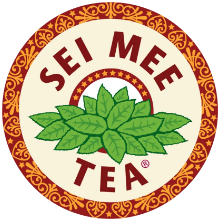As green tea is gaining popularity, more specific names of green tea are used as product names. If you are a tea fan, probably you’ve heard “Gyokuro.” Gyokuro is pronounced ‘g-yo-koo-ro’, and its Kanji characters, 玉露, mean ‘jade-dew.’ As this romantic name suggests, Gyokuro is considered “the highest quality green tea” among Japanese green teas. Simply put, Gyokuro is shade-grown green tea to be enjoyed as steeped tea (as opposed to matcha in powder form), using the same post-harvest process as Sencha green tea.
About a century before Gyokuro was born, in 1738, Sencha (煎茶) method was invented by Sohen Nagatani, a tea farmer in the Uji area. Before then, the green tea available for common people was crude and lower quality than the green tea we now enjoy. It was processed by the “pan-fry” method or boiled. The brewed tea was brownish and the taste was rough.
Nagatani had a desire to make a tasty tea with fresh green color for common people as opposed to Matcha, which was powdered tea and only available to the higher class. Nagatani discovered a way to keep the leaf green by steaming the leaf after harvest. He also enriched the flavor by using a rolling method to shape tea leaves while drying them. Nagatani took this revolutionary tea to a major tea merchant located in Edo (currently, Tokyo) ,Yamamotoyama. They named this product “Tenka-ichi”, which means “number one in the whole world.” With its fresh green color and taste, this product became an instant hit as its name implied. The wild success of Sencha brought Yamamotoyama a fortune and the merchant rewarded the Nagatani family fairly year after year for 137 years.
The above photo is the ancestral home of Sohen Nagatani located in Uji, Japan. In 1835, the owner of Yamamotoyama at that time, Kahei Yamamoto, released a new product: “Gyokuro”, by using shade-grown leaves processed by the Sencha method. Before then, “shade-grown tea” meant only “Matcha.” The shading technique increases “richness in flavor,” now known as “Umami (oo-mah-me)” or savoriness.
The Beginning of Tea History Between Japan and the U.S
Traditionally, only selected farms had been allowed to shade their tea fields. However, the closed country of Japan with its stalled society was beginning to change; “Gyokuro” is a hybrid of the Matcha method and Sencha method. It offers less vegetal, more floral taste and aroma with rich Umami, compared to Sencha. And within two decades, “President Millard Fillmore had directed his navy to open the ports of Japan to American trade,” as Bruce Richardson states in his fascinating article about Japanese green tea: “Shizuoka: Tea in Mt. Fuji’s Shadow,” which was published in “Fresh Cup Magazine.” This is the beginning of the “tea history” between Japan and the U.S.
I’d love to quote the well-written article by Bruce Richardson with his permission: “As soon as Japan’s gates were pried open, the United States became its best tea customer.” “In 1859, 400,000 tons of Japanese teas were exported to the United States.” “Per capita, each year Americans were consuming 1.3 pounds of tea and nearly eight pounds of coffee as the (19th) century came to a close,” and close to 50% of the tea imports came from Japan around that time. Its volume decreased due to the increase in imports from China. Now the trade volume is about one-tenth, in terms of tea imports from Japan.
Fukamushi and Gyokuro
Now another century has passed, and in the mid-20th century, “Fukamushi Sencha (深蒸し煎茶)” was born. “Fukamushi (foo-kah-moo-she)” means “steamed for a longer time.” Mr. Richardson also introduces this unique Japanese tea in his article: “The amount of time involved in steaming also contributes to the taste of green tea. A general rule is: the deeper the steaming, the thicker the brewed tea will become. Quickly steamed teas (twenty to forty seconds) tend to be much lighter in color when viewed in the cup.” “Shizuoka is known for a unique style of deep-steamed tea called Fukamushi, which is steamed eighty to 100 seconds. These extra seconds of steam cause tea leaves to break down, lose their usual shape, and become separated. Fukamushi teas appear slightly more broken than other green teas. When steeped, it results in a distinctively rich, cloudy, dark-green liquor with notes (to my mind) of asparagus, egg yolk, and umami.”
Now that you know the differences between Gyokuro and Fukamushi Sencha in-depth, see the distinguishing differences between these two prominent Japanese teas: Shade-grown tea is deprived of sun exposure while it’s growing. The deprivation increases the “Chlorophyll” in the tea leaf to make its photosynthesis process more efficient with less sunlight. Chlorophyll is the green color pigment, and the shade-grown tea leaf increases the intensity of its green color. After the steaming and drying process, the intense bright green color of shade-grown tea leaves, Gyokuro, becomes a richer and darker shade of green, almost black.
Interestingly, these technical terms on Japanese green tea products do not have strict regulations nor are they trademarked or patented. Each tea maker has the liberty to name “Gyokuro” for “Kabuse-cha,” for example. “Kabuse-cha” is a green tea grown in shade for a short period of time, usually about one week. The shaded period to make true Gyokuro is usually three weeks. The longer the shade-grown period is, the less the growing speed; thus, the yield of true Gyokuro is much less than the counterpart, and this is another reason “Gyokuro” tea is a rare “jewel.”
Find our Organic Gyokuro here.
Find our Organic Fukamushi Sencha here.
Meet the Author: Kiyomi
Resource: Japan Tea Export Council http://www.nihon-cha.or.jp/export/english/problem.html https://www.freshcup.com/shizuoka-tea-in-mt-fujis-shadow/





